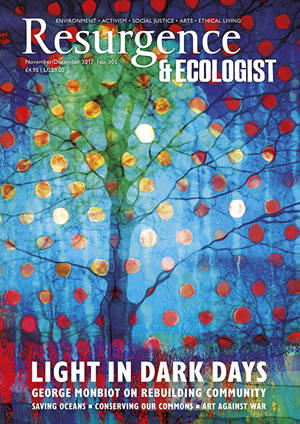Sailing my small yacht on the western seaboard of Europe these last 25 years, I have often been blown about by wild winds, like the gale that blew us across the Bay of Biscay and the storm that plucked out the anchor four times in one night in a Scottish loch. These are maritime winds, caused by disturbances in the North Atlantic on the border between tropical and Arctic air. They bring the changeable weather we are so familiar with in the British Isles.
Nick Hunt is in pursuit of a different kind of wind, which occurs mainly in continental landmasses, where the flow of air from high to low pressure is amplified by the structure of the landscape, in particular by mountains, as it funnels through gaps and drops down slopes. Of the dozens of named winds in Europe, he chose to follow four: the Helm in the English Pennines; the Bora, which hurtles down from the mountains of Slovenia and Croatia to the Adriatic Sea; the Foehn in the Swiss Alps; and the Mistral, which blows down the Rhône Valley to the Mediterranean.
As Hunt confesses in the introduction, he knew little about the nature of winds before he started this exploration. He thought of air as empty space waiting to be filled, had no idea where winds “come from” or where they “go”. The facts that air is a gas with weight and that winds are caused when air is sucked into low-pressure areas were a revelation to him. As a sailor, while I understand the pattern of North Atlantic winds, I knew next to nothing of these great named winds and their impact on local human cultures.
This for me is one great merit of Where the Wild Winds Are. For are not winds among the “great gestures” of our planet? I suspect we all know far less than we should, for they are integral processes of the Gaian system, redistributing heat and moisture, and their regular patterns are vulnerable to the disturbances of climate change.
The book describes four journeys on foot seeking out and following these winds. Hunt describes how they impact on the countryside, the architecture and the local people. He draws us into his impatience as he waits for them to blow – of course they don’t perform to order. And he takes us with him, sometimes step by step, as he walks into their most intensive and violent manifestations. He tells us, as he climbs the mountains above Split in the face of the Bora, how it froze his skin and howled in his ears, “a nameless and energetic thing that erased the line between hearing and feeling… Like a religious maniac, I roared my appreciation.”
Following the Foehn in Switzerland, Hunt learns from locals how it causes depression and other psychological upsets. But at first he is invigorated by his encounters, describing how, as the wind nearly sweeps him off his feet, he watches it hurl “man-sized chunks of snow” off the mountainside. “It was entertainment fit for gods,” he writes exuberantly. But very soon afterwards, he has had enough: “A switch had flipped in my brain: I was not enjoying this any more.” It takes him a while to realise that he is experiencing the psychological impact of the wind that the locals have been telling him about: he feels completely wretched; and “This was how I was meant to feel.”
Of course, the winds can be understood as natural phenomena, but as Nick Hunt shows us in this educational and entertaining book, they are also personalities and mythological creatures that are deeply entwined in human history and culture. This book introduces us to the “character of winds … and the qualities they bring”.






